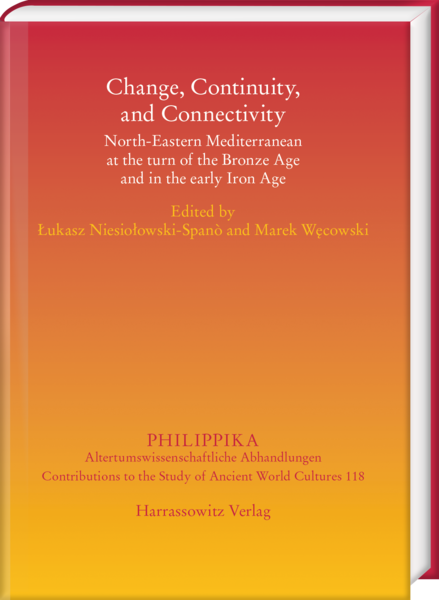
Change, Continuity, and Connectivity North-Eastern Mediterranean at the turn of the Bronze Age and in the early Iron Age
The end of the Bronze Age and beginning of the Iron Age was the period of a historical turning point for the relationship of the Aegean and the Levant. The two regions were closely related to each other and benefited mutually in this period. The transmission of the alphabet from the East to Greece and the appearance of Mycenaean-style pottery in the East illustrate the cultural borrowings in both directions.
The volume presents updated studies on both regions and questions of bilateral relationships regarding archaeological, historical and linguistic aspects. These studies shed light on the pivotal periods of both regions: when Greek poleis were formed, with the culture related to it, and when the political and social situation in the Levant took its form, influencing the entire first millennium BCE.
In the linguistic part, the volume includes papers showing possible linguistic relations and mutual borrowings in the triangle of Semitic, Greek and Anatolian languages. In the archaeological and historical parts, the studies deal both with case studies from Anatolia, Greece and Palestine and the synthetic issues regarding the ‘big’ questions. The book also presents the possible benefits of the usage of scientific methods in historical reconstruction – analysis of isotopes and ancient DNA samples. These new techniques offer a useful tool, expanding our way of exploring the past.
Harrassowitz Verlag: Wiesbaden 2018
Philippika – Altertumswissenschaftliche Abhandlungen / Contributions to the Study of Ancient World Cultures, 118
VIII, 468 pages
ISBN: 978-3-447-10969-7